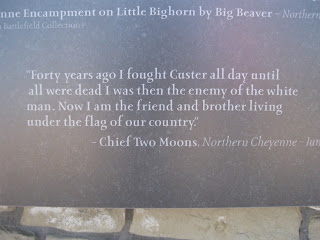



Sentinel Butte, ND, Tom's home town, was the last stop on our nearly ten-month-long RV odyssey. Sentinel Butte is 17 miles west of Medora and 2 miles south of Interstate 94 in western North Dakota. In many ways, Sentinel Butte is not unlike many other small commu- nities in North Dakota with populations of 200 or fewer.
It is different in a couple of ways that really count. Some of you may remember stories that made national news a few years back about a small community where everybody in town had a key to the gas pump. Fueling up was completely on the honor system.
Buzz Olson was the owner of the station when that story broke. The station still operates on the same honor system. These days the station is run by Rick Olson, son of Buzz and current mayor of Sentinel Butte. It may be useful to note here that this service station is the only business operating in the community. The station these days provides fuel but is also the gathering place for members of the community. Morning coffee is a daily ritual.
Fridays, however, are special. Each Friday noon the community assembles for a potluck with Mayor Rick Olson grilling steaks, burgers, and hot dogs. Other community members or visitors--like us--are welcome to participate in the Friday potluck. You can bring a dish to share or put your contribution in the jar and dig in.
Mayor Rick never knows who or how many will show up. It could be anywhere from a dozen to 35 people. In typical western fashion, you'll note that men and women sit in separate areas as shown in the picture. Even though this hasn't been Tom's home town for many years, it is a very comfortable place to visit and the Western hospitality can't be beat!
It seems that the USA could benefit from other communities following Sentinel Butte's example.
















































